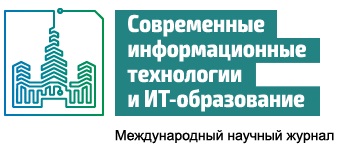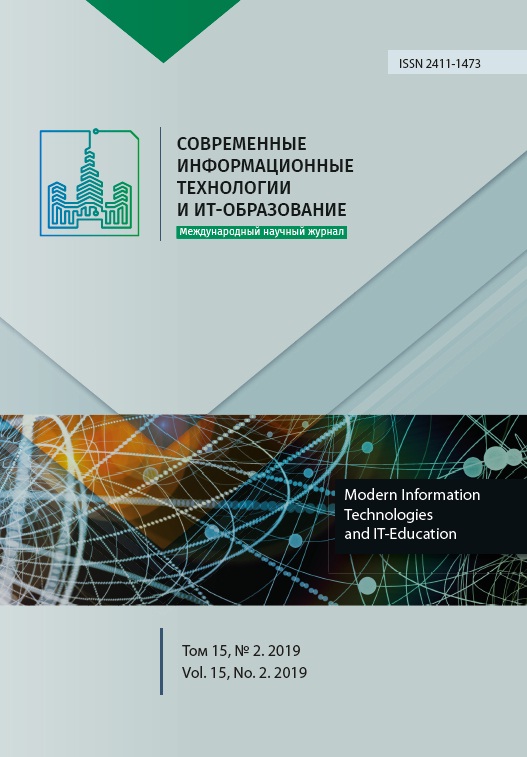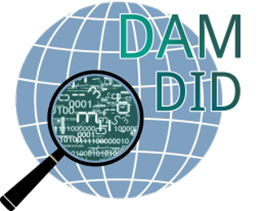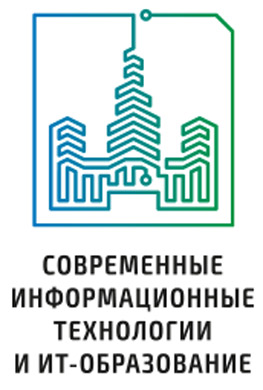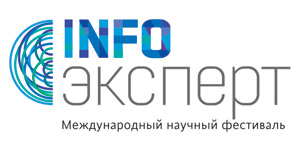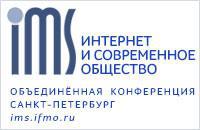Об анализе пассажиропотоков Московского метрополитена
Аннотация
В работе рассматривается модель анализа пассажиропотоков Московского метрополитена. Исходной информацией для анализа выступает матрица корреспонденции, которая описывает количество пассажиров, перемещавшихся между парами станций метро за указанный временной интервал. Такого рода данные собираются на основе информации мобильных операторов. Такого рода информация является широко используемым подходом к представлению транспортных данных. Статья содержит обзор моделей анализа транспортных данных. В работе предложен подход к классификации станций метрополитена по типу пассажиропотока. В рамках предложенного подхода сравниваются входы и выходы пассажиров для станций. Именно соотношение этих параметров, развернутое по времени и является основанием для классификации станций (отнесением станций к одному из классов, различающихся характером соотношения входов и выходов пассажиров). Это позволяет, например, определить рабочие и жилые зоны города, как станции, куда приезжают на работу, и станции, откуда едут на работу. Такой анализ позволяет определить станции, которые являются местом приема внешнего пассажиропотока. В каких-то случаях это будет объяснимо наличием рядом железнодорожных вокзалов и транспортно-пересадочных узлов, в каких-то случаях это будет свидетельством наличия каких-то относительно неявных (неизвестных) процессов в городе (например, автобусные линии из пригородов). Также изменения в найденных закономерностях могут служить свидетельством каких-то изменений в жизни города.
Литература
[2] Namiot D., Kutuzmanov Z., Fedorov E., Pokusaev O. On the assessment of socio-economic effects of the city railway. International Journal of Open Information Technologies. 2018: 6(1):92-103. Available at: https://elibrary.ru/item.asp?id=32314918 (accessed 21.04.2019). (In Russ., abstract in Eng.)
[3] Namiot D., Pokusaev O., Lazutkina V. On passenger flow data models for urban railways. International Journal of Open Information Technologies. 2018; 6(3):9-14. Available at: https://elibrary.ru/item.asp?id=32595087 (accessed 21.04.2019). (In Russ., abstract in Eng.)
[4] Namiot D., Sneps-Sneppe М. A Survey of Smart Cards Data Mining. CEUR Workshop Proceedings. Supplementary Proceedings of the Sixth International Conference on Analysis of Images, Social Networks and Texts (AIST 2017). Moscow, Russia, 2017; 1975. Available at: http://ceur-ws.org/Vol-1975/paper33.pdf (accessed 21.04.2019). (In Eng.)
[5] El Mahrsi M.K. et al. Understanding passenger patterns in public transit through smart card and socioeconomic data. ACM SIGKDD Workshop on Urban Computing. 2014. Available at: https://www.comeetie.fr/pdfrepos/urbcomp2014.pdf (accessed 21.04.2019). (In Eng.)
[6] Ceapa I., Smith C., Capra L. Avoiding the crowds: understanding Tube station congestion patterns from trip data. Proceedings of the ACM SIGKDD International Workshop on Urban Computing (UrbComp '12). ACM, New York, NY, USA. 2012; 134-141. (In Eng.) DOI: 10.1145/2346496.2346518
[7] Dai X., Lijun S., Yanyan X. Short-Term Origin-Destination Based Metro Flow Prediction with Probabilistic Model Selection Approach. Journal of Advanced Transportation. 2018; 2018:5942763. (In Eng.) DOI: 10.1155/2018/5942763
[8] Liu Y., Qin Y., Guo J., Cai C., Wang Y., Jia L. Short-term forecasting of rail transit passenger flow based on long short-term memory neural network. 2018 International Conference on Intelligent Rail Transportation (ICIRT). Singapore. 2018; 1-5. (In Eng.) DOI: 10.1109/ICIRT.2018.8641683
[9] Mínguez R., Sánchez-Cambronero S., Castillo W., Jiménez P. Optimal traffic plate scanning location for OD trip matrix and route estimation in road networks. Transportation Research Part B: Methodological. 2010; 44(2):282-298. (In Eng.) DOI: 10.1016/j.trb.2009.07.008
[10] Zhong C., Batty M., Manley E., Wang J., Wang Z., Chen F., Schmitt G. Variability in Regularity: Mining Temporal Mobility Patterns in London, Singapore and Beijing Using Smart-Card Data. PLoS ONE. 2016; 11(2):e0149222. (In Eng.) DOI: 10.1371/journal.pone.0149222
[11] Long Y., Thill J-C. Combining smart card data and household travel survey to analyze jobs–housing relationships in Beijing. Computers, Environment and Urban Systems. 2015; 53:19-35. (In Eng.) DOI: j.compenvurbsys.2015.02.005
[12] Hong C., Manley E., Arisona S.M., Batty M., Schmitt G. Measuring variability of mobility patterns from multiday smart-card data. Journal of Computational Science. 2015; 9:125-130. (In Eng.) DOI: 10.1016/j.jocs.2015.04.021
[13] Zhu X., Xu R. Generating route choice sets with operation information on metro networks. Journal of Traffic and Transportation Engineering (English Edition). 2016; 3(3):243-252. (In Eng.) DOI: 10.1016/j.jtte.2016.05.001
[14] Chang J.Y., Yang H.L. Improving the transfer flow of the Taipei metro system for route development: Using open data of the origin and destination station. Proceedings of The 18th International Conference on Electronic Business. ICEB, Guilin, China. 2018; 766-772. Available at: https://aisel.aisnet.org/cgi/viewcontent.cgi?article=1084&context=iceb2018 (accessed 21.04.2019). (In Eng.)
[15] Guo X. et al. Multiperiod-based timetable optimization for metro transit networks. Transportation Research Part B: Methodological. 2017; 96:46-67. (In Eng.) DOI: 10.1016/j.trb.2016.11.005
[16] Mo Y. et al. A flexible metro train scheduling approach to minimize energy cost and passenger waiting time. Computers & Industrial Engineering. 2019; 132:412-432. (In Eng.) DOI: 10.1016/j.cie.2019.04.031
[17] Leeuwen van D. et al. Spatio-Temporal Clustering of Time-Dependent Origin-Destination Electronic Trace Data. Procedia Computer Science. 2018; 130:359-367. (In Eng.) DOI: 10.1016/j.procs.2018.04.053
[18] Lin D., Zhang Y., Zhu R., Meng L. The analysis of catchment areas of metro stations using trajectory data generated by dockless shared bikes. Sustainable Cities and Society. 2019; 49:101598. (In Eng.) DOI: 10.1016/j.scs.2019.101598
[19] Calvo F., Eboli L., Forciniti C., Mazzulla G. Factors influencing trip generation on metro system in Madrid (Spain). Transportation Research Part D: Transport and Environment. 2019; 67:156-172. (In Eng.) DOI: 10.1016/j.trd.2018.11.021
[20] Martin D., Gale C., Cockings S., Harfoot A. Origin-destination geodemographics for analysis of travel to work flows. Computers, Environment and Urban Systems. 2018; 67:68-79. (In Eng.) DOI: 10.1016/j.compenvurbsys.2017.09.002
[21] Bachir D., Khodabandelou G., Gauthier V., El-Yacoubi M.A., Puchingerd J. Inferring dynamic origin-destination flows by transport mode using mobile phone data. Transportation Research Part C: Emerging Technologies. 2019; 101:254-275. (In Eng.) DOI: 10.1016/j.trc.2019.02.013

Это произведение доступно по лицензии Creative Commons «Attribution» («Атрибуция») 4.0 Всемирная.
Редакционная политика журнала основывается на традиционных этических принципах российской научной периодики и строится с учетом этических норм работы редакторов и издателей, закрепленных в Кодексе поведения и руководящих принципах наилучшей практики для редактора журнала (Code of Conduct and Best Practice Guidelines for Journal Editors) и Кодексе поведения для издателя журнала (Code of Conduct for Journal Publishers), разработанных Комитетом по публикационной этике - Committee on Publication Ethics (COPE). В процессе издательской деятельности редколлегия журнала руководствуется международными правилами охраны авторского права, нормами действующего законодательства РФ, международными издательскими стандартами и обязательной ссылке на первоисточник.
Журнал позволяет авторам сохранять авторское право без ограничений. Журнал позволяет авторам сохранить права на публикацию без ограничений.
Издательская политика в области авторского права и архивирования определяются «зеленым цветом» в базе данных SHERPA/RoMEO.
Все статьи распространяются на условиях лицензии Creative Commons «Attribution» («Атрибуция») 4.0 Всемирная, которая позволяет другим использовать, распространять, дополнять эту работу с обязательной ссылкой на оригинальную работу и публикацию в этом журналe.
